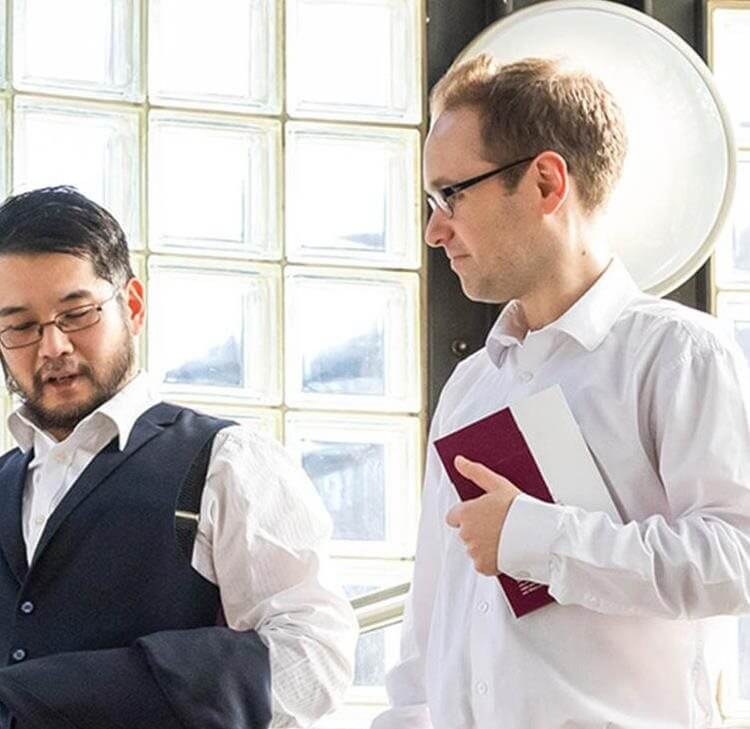In the space of two weeks over the summer we saw two different cases address the question of what the word “child” means in somebody’s will. These two cases (Coulson v Paul and Marcus v Marcus) had very different facts, and produced two different outcomes.
Coulson v Paul: The facts
The will in question in the case of Coulson v Paul was fairly typical. Allan Paul died in April 2021, leaving a very short will that left his entire estate to his son, John. Allan’s other son, Ronald, was overlooked entirely, for reasons Allan explained when making his will.
Of importance was a clause in Allan’s will that meant if John died before his father, Allan’s inheritance would pass to his children:
“provided always that if he shall pre-decease me leaving a child or children him surviving then such child or children shall take and if more than one equally between them the whole of my estate which their late father would have inherited had he so survived me”
John pre-deceased his father, passing away in June 2020. John was survived by a biological child, Emma, the claimant in the proceedings.
But, Emma had been adopted at a young age by her mother’s new husband. Given s.67 of the Adoption and Children Act 2002, Emma was to be treated in law as a child of her adoptive father, and not a child of John’s. This section is worth quoting in full:
“(1) An adopted person is to be treated in law as if born as the child of the adopters or adopter.
(2) An adopted person is the legitimate child of the adopters or adopter and, if adopted by-
(a) a couple, or
(b) one of a couple under section 51(2)
is to be treated as the child of the relationship of the couple in question.
(3) An adopted person-
(a) if adopted by one of a couple under section 51(2), is to be treated in law as not being the child of any person other than the adopter and the other one of the couple, and
(b) in any other case, is to be treated in law, subject to subsection (4), as not being the child of any person other than the adopters or adopter;
but this subsection does not affect any reference in this Act to a person's natural parent or to any other natural relationship.
(4) In the case of a person adopted by one of the person's natural parents as sole adoptive parent, subsection (3)(b) has no effect as respects entitlement to property depending on relationship to that parent, or as respects anything else depending on that relationship.
(5) This section has effect from the date of the adoption.
(6) Subject to the provisions of this Chapter and Schedule 4, this section-
(a) applies for the interpretation of enactments or instruments passed or made before as well as after the adoption, and so applies subject to any contrary indication, and
(b) has effect as respects things done, or events occurring, on or after the adoption."
The complication in the case was that by the time of his death, Emma had established contact and a good relationship with her father. In fact, in John’s own will (made in 2016) he had referred to her as “my daughter” and had left her 50% of the sale proceeds of his home.
Emma therefore issued a claim, arguing that for the purposes of Allan’s will she was “John’s child” and should therefore inherit John’s share. If she lost this claim, then there was a partial intestacy, and Ronald would inherit the entire estate.
The law
The starting problem for Emma was that Section 67(3)(b) (quoted above) makes it clear beyond doubt that an adopted child becomes the child of their adopter/adopters, and is no longer to be treated in law as the child of any other person.
Importantly though, that section applies "subject to any contrary intention", which, it was argued on behalf of the claimant, was plainly the case here. It was argued that the will should be interpreted accordingly, or the will should be rectified to correct the “mistake” and ensure Emma inherited, and not Ronald.
Interpretation of the will
In Marley v Rawlings the Supreme Court referred to the interpretation of contracts in the context of wills. In Marley Lord Neuberger said:
"When interpreting a contract, the court is concerned to find the intention of the party or parties, and it does this by identifying the meaning of the relevant words, (a) in the light of (i) the natural and ordinary meaning of those words, (ii) the overall purpose of the document, (iii) any other provisions of the document (iv) the facts known or assumed by the parties at the time that the document was executed, and (v) common sense, but (b) ignoring subjective evidence of any party's intentions… When it comes to interpreting wills, it seems to me that the approach should be the same."
The difficulty for the claimant was that Allan’s will was entirely unambiguous, and certainly not "meaningless". There was no "contrary intention" expressed within Allan’s will itself, and questions of Allan’s subjective intentions were not admissible as evidence, given the lack of ambiguity in the language used.
But the court added, for good measure, even if the phrase was somehow ambiguous, it was not convinced that Allan himself was treating Emma as a child of the biological father prior to his death (although the court had little hesitation that John was treating Emma as his daughter prior to his death).
Unsurprisingly in light of this finding, the court rejected any possibility of rectification of the will, on the basis there was no evidence that Allan’s instructions had not been understood or that there had been a “clerical error”.
An interesting case, perhaps with an outcome that a lot of people will find troubling, particularly given the effect was that the deceased's other son inherited everything even though the deceased had gone to great lengths to try and exclude him from his will / estate.
Marcus v Marcus: The facts
Quite incredibly, just two weeks later we had another case concerning what constitutes a “child” of the deceased. This time, in Marcus v Marcus, it was held that the defendant was a child of the deceased for the purposes of a trust, despite the court also finding that, biologically and legally speaking, the defendant was not a child of the settlor of the trust.
In 1973 Stuart Marcus married Patricia. Stuart was already well on his way to becoming a successful entrepreneur by this time, and he would continue to be a very successful business person, specialising in children’s toys.
Stuart and Patricia had two children: Edward, who was born in 1978; and Jonathan, who was born in 1981.
In November 2003 Stuart settled a Trust 'the Trust), a so called 'Son of a Melville' scheme, designed to postpone, legitimately, payments of Capital Gains Tax (CGT).
Insofar was as relevant to the claim, the beneficiaries of the Trust included “the children and remoter issue of the Settlor...”.
Stuart passed away in 2020. By the time the matter came to trial the assets in the Trust were reportedly worth around £14.5m.
Now the interesting part…
In 2010, entirely unbeknownst to Stuart it seems, Patricia told Edward that Stuart was not his biological father. Instead, he was a partner from a law firm in Norwich.
In some circumstances that may not have become particularly relevant. But Edward and Jonathan had a huge fallout in time, with Patricia giving evidence on Jonathan’s behalf and firmly taking his side in the disagreement.
The primary question for the court to resolve became, is Edward to be considered a child of Stuart and therefore within the class of beneficiaries in the Trust?
The trial
The court heard expert evidence on the issue of DNA testing, based on samples given by Edward, Jonathan and Patricia, but not from Stuart.
The expert’s report was caveated heavily - DNA sampling from siblings being less reliable than sampling from parents they said - but nonetheless the report concluded Edward and Jonathan were only half siblings, and not full siblings. It added that “it is 25 times more likely that [Jonathan] and [Edward] are related as half siblings than if they are related as full siblings”
Unsurprisingly, despite some challenges to the weight of this evidence from Edward’s legal team owing to technical shortcomings in the report, the court had little hesitation in accepting the evidence.
Patricia’s evidence on the point was detailed and the court seems to have little evidence accepting it. In a further twist, Edward sought to assert that Jonathan might also not be Stuart’s son (!) and that he too may have been a son of the same Norwich based solicitor. The purpose here presumably was to ensure that if Edward lost, he intended to take Jonathan down with him. Patricia’s evidence on her continued contact with this solicitor after their “one night” together was found to be inconsistent in various ways. But, the court stopped short of making findings in this respect.
The court having found that Stuart was not Edward’s biological father, the question then became whether Edward was a “child” of Stuart’s for the purposes of the Trust.
The court undertook an analysis of the law, authorities and commentary on questions of construction in this context. Put as succinctly as possible, the starting point is:
“... the court is concerned to identify the intention of the [settlor] by reference to what a reasonable person, having all the background knowledge which would have been available to the parties, would have understood them to be using the language in the [Trust] to mean.
The court's task is to ascertain the objective meaning of the language….This is not a literalist exercise; the court must consider the [Trust] as a whole and, depending on the nature, formality, and quality of drafting of the [Trust] give more or less weight to elements of the wider context in reaching its view as to that objective meaning.”
In other words, the court needs to find subjective intention, but by applying an objective test. Not always an easy path to tread.
Applying this test, the judgment records:
“The reasonable person who is undertaking this exercise knows about the family context and the purposes of creating the Settlement. It is known that Stuart was unlikely to have any further children. He had created a successful business that he had founded. He had a family with two sons who had reached their early twenties. There was no reason why Stuart should have wanted to have treated differently or to have benefitted any child or children other than Edward and Jonathan.”
I consider that the surrounding circumstances point overwhelmingly in favour of a wider meaning than biological child being adopted. A reasonable person in knowledge of the relevant facts would readily conclude that when using "children" Stuart intended this word to be understood as meaning Edward and Jonathan; and not "Edward and Jonathan provided they are in fact my biological sons."
Thoughts
Normally these articles end with a warning to “take legal advice” and/or to ensure you instruct a “specialist” in the field required. Stuart had done just that, and yet this matter still reached a, no doubt expensive, three-day trial.
Perhaps the takeaway instead could be paraphrased from the lips of Forest Gump; litigation, much as with life, is like a box of chocolates; you never know what you’re gonna get.
Contact

Daniel Edwards
Partner
daniel.edwards@brownejacobson.com
+44 (0)330 045 2533





















